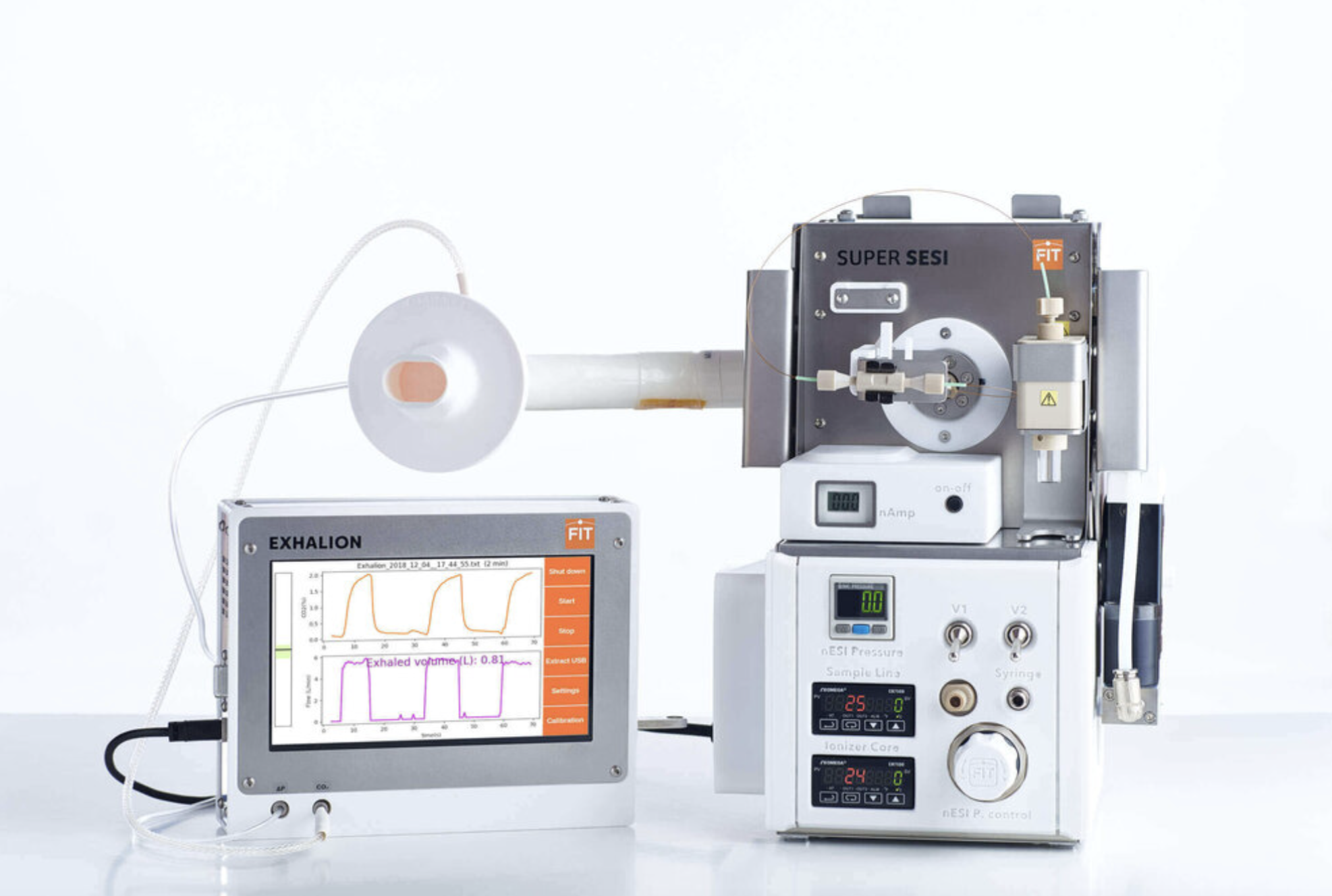Identification of disease specific biomarkers by exhalomics using Secondary Electrospray Ionisation High-resolution Mass Spectrometry (SESI-HRMS) in children with cystic fibrosis
Katharina Heschl, Naemi Haas-Baumann, Ronja Weber, Astghik Baghdasaryan, Srdjan J. Micic, Florian Singer, Renato Zenobi, Tobias Bruderer, Alexander Möller
Abstract
This the first study to assess real-time “breath-prints” of children using SESI-HRMS.
We present data of 41 children, 4-16yrs (23 CF and 17 healthy controls) from an ongoing cross-sectional study. Children were breathing via a mouthpiece into a heated sampling tube connected to the SESI-HRMS-analyser. Carefully pre-processed MS data was used for biomarker detection and classification. Mann-Whitney U tests together with FDR adjusted p-values were applied to isolate mass-to-charge ratios (m/z: representing potential biomarkers) Subsequent variable reduction through principal component analysis was used to perform binary logistic regression.
CF and HC had comparable BMI (17.7±3.0 vs 16.9±2.3; p=0.17) and FEV1 (z-scores -0.45±1.18 vs -0.27±1.13; p=0.37). 4 children were P.aeruginosa positive. We were able to isolate 43 m/z peaks with elevated intensity signals in CF vs HC below an FDR control level of q = 0.15. Classification applied to first principal components resulted in significant outcomes (CF vs. HC) with an average accuracy of 81.3% and a Cohen’s Kappa value of 0.61.
We could annotate the detected m/z peaks with molecular formula and identify different sets of related molecules. Structure elucidation is ongoing based on comparison of fragment spectra with reference chemicals for unequivocal confirmation of the involved molecular markers.
Non-invasive breath analysis with SESI-HRMS identifies CF specific compounds in children. This will allow further phenotyping of CF lung disease with the potential for early detection of airway infection.


